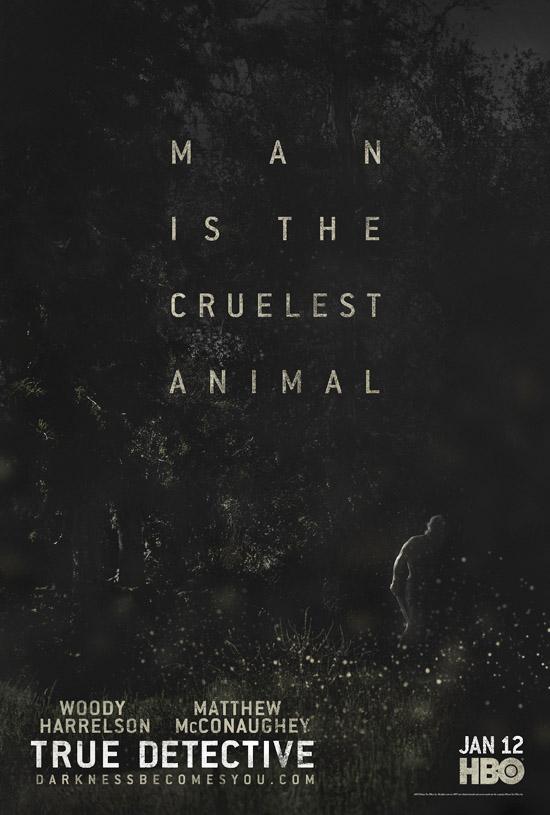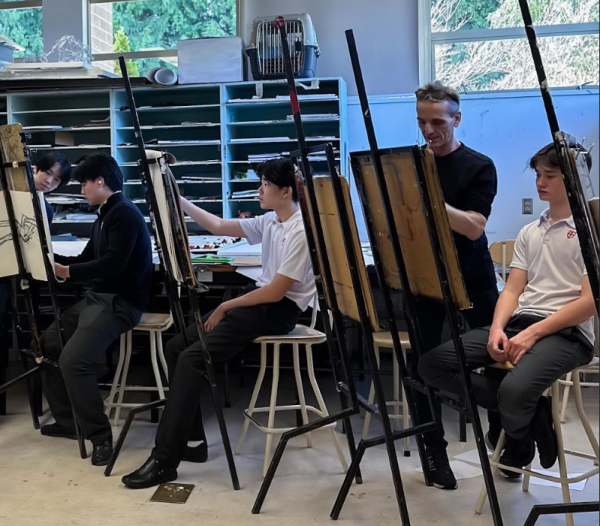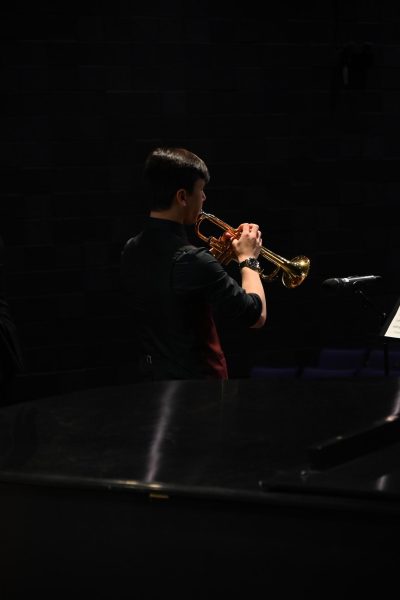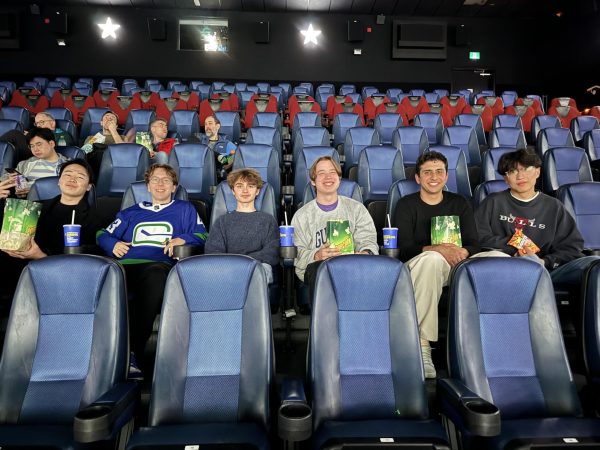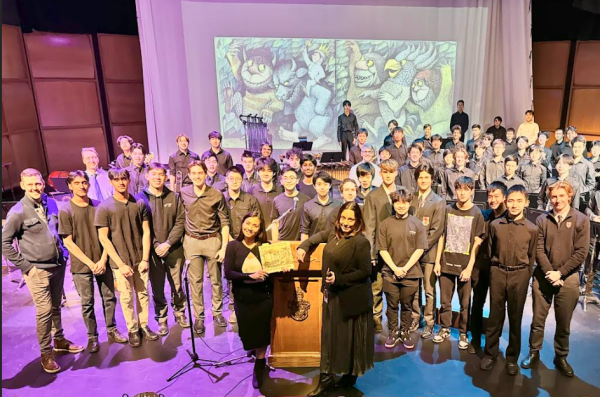True Detective Season 1 review: True Transcendence
(Author’s Note: no major plot spoilers in this review, but keep in mind that every review is in essence a spoiler.)
“The fundamental idea behind this series is to take the populous genre of an investigative procedural and use it as an investigation into the human character.” – creator/writer Nic Pizzolatto, in HBO’s About True Detective
It used to be that film always looked down upon TV in terms of artistic quality – much like how literature looked down upon film, and how we all look down upon interactive arts. In recent years we’ve seen a boom in TV story quality, manifested by shows like The Wire, The Sopranos, Mad Men, Homeland, Game of Thrones, and, of course, Breaking Bad. TV is shown to be equally capable of possessing profound stories, rich characters, and extravagant sets.
Nonetheless, TV is still easily distinguishable from films by its looks – its cinematography too simple, its coloring too plain, its visuals simply not stylish enough. We know some films are described as visual poems. But never before did we think that television could be too. TV cinematics simply couldn’t match even blockbuster flicks, let alone “visual poems”.
But True Detective did it.
We know the structure of television series. One or two creators. A writer’s room. Several different directors. We’ve heard of auteurs in filmmaking. But never before did we think auteurism in television was feasible.
True Detective did it – at least as close as television ever has.
One writer, Nic Pizzolatto. One director, Cary Fukunaga. From the beginning till the end it’s their vision through and through. Never altered or interrupted. It also helps that the show is in an anthology format much like American Horror Story. Every season is an independent story. No need for cliffhangers at the end of every season. No forced twists and turns to keep the show on air as long as possible. No need to worry about a brilliant story to fall off as it continues because all of the story is in these eight episodes.
One vision. Two hypnotic performances from Matthew McConaughey and Woody Harrelson. The result: this is not just one of the best TV series for as long as we can remember; this is one of the most beautiful artwork, one of the most moving character studies, one of the most compelling philosophical musings in the history of cinematic arts, on screens big and small.
But what makes True Detective special? You look at the premise – appears nothing more than a detective story. You look at the setting – average mysterious, obscure little town setting. You look at the cops – the clichéd police duo. You look at the villains – yet some more psychopathic serial killers. You become bewildered.
I’ll defend the plot later. True Detective’s utter triumph, however, lies within the fact that even if the story truly is every bit as clichéd as it appears (which it isn’t), it’s still without a doubt one of the greatest stories ever told.
“It’s not what it is about. It’s how it is about it.” There is something about True Detective that makes it shine as brilliant as a supernova in the dark void of space. Some call it storytelling. Some call it cinematics. Some, the language of film, its tone, its feel. True Detective is pure poetry.
It’s the way its cinematic elements – its cinematography, its music, its editing, its costumes, settings, props, coloring, acting, dialogues, narrative – all come together so perfectly, making True Detective so much more than just its script. This, sadly, isn’t the case with many films nowadays. And it certainly isn’t the case with most TV series.
It’s difficult to describe to you exactly what True Detective’s tone is. Like the way you find it hard to explain poetry. Like how you often can’t explain why something is beautiful. You’ll have to feel it for yourself.
But True Detective certainly isn’t a show for everyone – despite its 9.5/10 IMDb rating and 88/100 metacritic score. I call it poetic, steady and confident, dark and heavy, spellbinding and mindblowing. Many call it slow, boring, clichéd and pretentious.
Let’s talk about the pacing. Slow perhaps isn’t the most accurate. Many critics have described it as “at times static” or “glacial”. But True Detective’s slow is a perfect, confident steadiness. The story – like its cinematography – simply flows like a river. It has its rapids its slow points, but it all feels natural, never rushed and never dragged. It’s slow and delicious, glacial but never dull. So many popcorn flicks nowadays, on the other hand, are fast but boring, every scene and every shot rushing forward relentlessly to the inevitable climax.
The delicacy of True Detective lies within the fact that no matter how static it may seem at times, there is always something interesting; even at its slowest points, you can still feel the angry river beneath. Much of the show is spent watching Marty Hart and Rust Cohle either talking or walking, in either slowly creeping or entirely still shots. But there’s always some tension in the frame, some emotion in the tale. It’s either residual emotion from the last shot or emotions created perfectly by the music or the setting or the acting or, more often, all of them.
Now the visuals. Those who have seen it will remember- and those who haven’t will have heard of – True Detective’s jaw-dropping 6-minute uninterrupted long take at the end of episode 4. Doubtlessly one of the most technically-challenging and awe-inspiring shot in TV history, it’s also one of the best even in films.
One fancy shot is far from enough though. True Detective’s triumph lies in that virtually every shot is perfect. T Bone Burnett’s subtle but powerful score only add more. The cinematography and the music, like the show’s pacing, is always just enough, never hurried or stretched, always steady and confident. And like its story, the cinematography and the music are ritual-like and hauntingly beautiful, unsettling in its bone but pleasing in its feel. Most outstanding of all, strangely, are True Detective’s establishing shots – particularly the forever slowly creeping aerial shots. Yes, a type of shot that is virtually done to death in everyday Hollywood flicks has somehow suddenly acquired unbelievable poetry and beauty in this TV series.
Here these establishing shots are no longer mere procedures or transition shots; they not only established the environment, but also immersed us in it. Many mystery and noir stories haunt their audience with the help of darkness – most of the stories take place during the night. But True Detective builds its world so successfully that it no longer needs the help of darkness; this is a show that can and will haunt you in broad daylight.
But more than mystery and suspense, True Detective’s cinematics are about a sense of forgotten sufferings, a bleak void full of darkness and despair. And they achieved it perfectly.
What about the story? As much as you think you already know about the plot from its premise – you don’t. You’ll be find everything to be familiar to the detective story structure – but nothing is the same. True Detective isn’t CSI: Lousiana or Law and Order: Rusty and Marty or American Sherlock. As its title suggests, this is a show that strives for realism. No infinite “zoom and enhance”. No “memory palace”. There’s just walking around, talking to people, sitting in offices and archives looking through files. There’s no superhuman memory or lightning fast deduction. Rust is smart, but he is no out-of-this-world genius like Sherlock.
Just like the pacing, the investigation unfolds almost in real-time on three different time planes (1995, 2002, and 2012). Gradually we are no longer watching two detectives working a case; we are living with them, as the case plagues their minds and haunts every one of their waking hours.
Here lie all the familiar pieces of a detective story and some more. A huge fan of H.P. Lovecraft, Robert W. Chambers and Thomas Ligotti, Nic Pizzolatto magnificently placed numerous symbols, metaphors, and references in the case. In addition to his obvious musings on religions and cults, the most referenced pieces are Ligotti’s A Conspiracy Against the Human Race and Chambers’ The King in Yellow. Pizzolatto didn’t just conjure these up as mere homage or showing off. Like all great artworks every reference was placed here for a purpose.
But the best thing about True Detective is that virtually none of these puzzles were explained. Those who read The King in Yellow certainly found the mystery in the story easier to decipher. For the rest of us, though, you’ll ponder the same questions every audience fries his brain about: why this symbol? Why Rust’s philosophical musings? What did Rust see? What is Carcosa? And who is the Yellow King? Numerous clues are scattered across the series, but like all great artworks, the beauty is that you don’t have to know the answers to enjoy the show when you first watch it. But should you choose to think about it, you’ll come to realize just how perfectly subtle all these clues and hints have been placed. (“Visions”, the billboard, “Do you believe in ghost?”, “Smell ash”, Rust’s conversation with Reggie, the tree hole, the self coronation inside the abandoned school, Chambers’ notion of cosmic horror, “for a pessimist you fret too much”, Errol’s monologues, and, of course, those two jaw-dropping scenes in the last episode.)
But why do I even bother with plot? After all, this is a detective story that concerns itself more with its detectives than with its story. Like Nic Pizzolatto pointed out, as Rust and Marty investigated further into the serial murder mystery, we the audience investigate the mystery that is their souls. Both investigations share the same traits: mostly calm and steady, often confusing, sometimes furious, and always focused on the little details.
Like most police duos, there is the normal guy and the crazy guy. Marty has a wife and two daughters. He’s good with people. Rust had a wife and a daughter. He’s “the tax man”, the weirdo who goes on and on about his nihilistic and existential philosophy.
But in the end it’s only a slightly less crazy guy and the crazy guy. We follow a man who has everything, and watch him lose all of it. Slowly but sure he slips toward the dark and the void. We also follow a man who has already lost everything, yet he loses even more. He had already believed in the dark and the void – yet he continued further into it.
Here’s the beauty of all of Rust’s philosophical musings: you’d think, from past experience, that most characters who muse about life are simply saying these things to make themselves more interesting, that in the end often none of these thoughts come together, that in essence philosophy in films and shows are nothing more than pretentious decorations to show off the writer himself. Such is not the case with True Detective. Just like the authors he admires, Nic Pizzolatto is writing a story much more than just what it appears; as he said in an interview with The Arkham Digest, “there was a clear line to me from Chambers to Lovecraft to Ligotti, and their fictional visions of cosmic despair were articulating the same things as certain nihilist and pessimist philosophers, but with more poetry and art and vision.” So he describes these three authors. And so it is with True Detective.
More than an investigation into a serial murder, True Detective is a strangely intimate investigation into Marty and Rust, who they are and how they change. More than that, it’s a triumph in the language of cinema, a work of pure free-flowing poetry. Even more, it’s also Nic Pizzolatto’s philosophical essay. That won’t be obvious at first, but like he pointed out, “the show’s true agenda, and its relationship to those philosophies, won’t be clear until the 8th episode finishes.” (also from his interview with The Arkham Digest)
And that’s what made True Detective’s first season truly transcendent. This show will be talked about in years to come. For 8 episodes we witness overwhelming sufferings, glimpse splashes of constrained, bleak happiness, and in end we come to the conclusion, along with Rust and Marty, that…
The best part is, there is going to be a season 2, with a different cast, a different story, and the same creators.
(If this review isn’t long enough for you yet, then I recommend the following articles)
1. http://blogs.wsj.com/speakeasy/2014/01/30/the-most-shocking-thing-about-hbos-true-detective/
3. http://insidetv.ew.com/2014/02/27/true-detective-nic-pizzolatto-season-1/
4. http://www.arkhamdigest.com/2014/01/true-detectives-nic-pizzolatto-on.html



